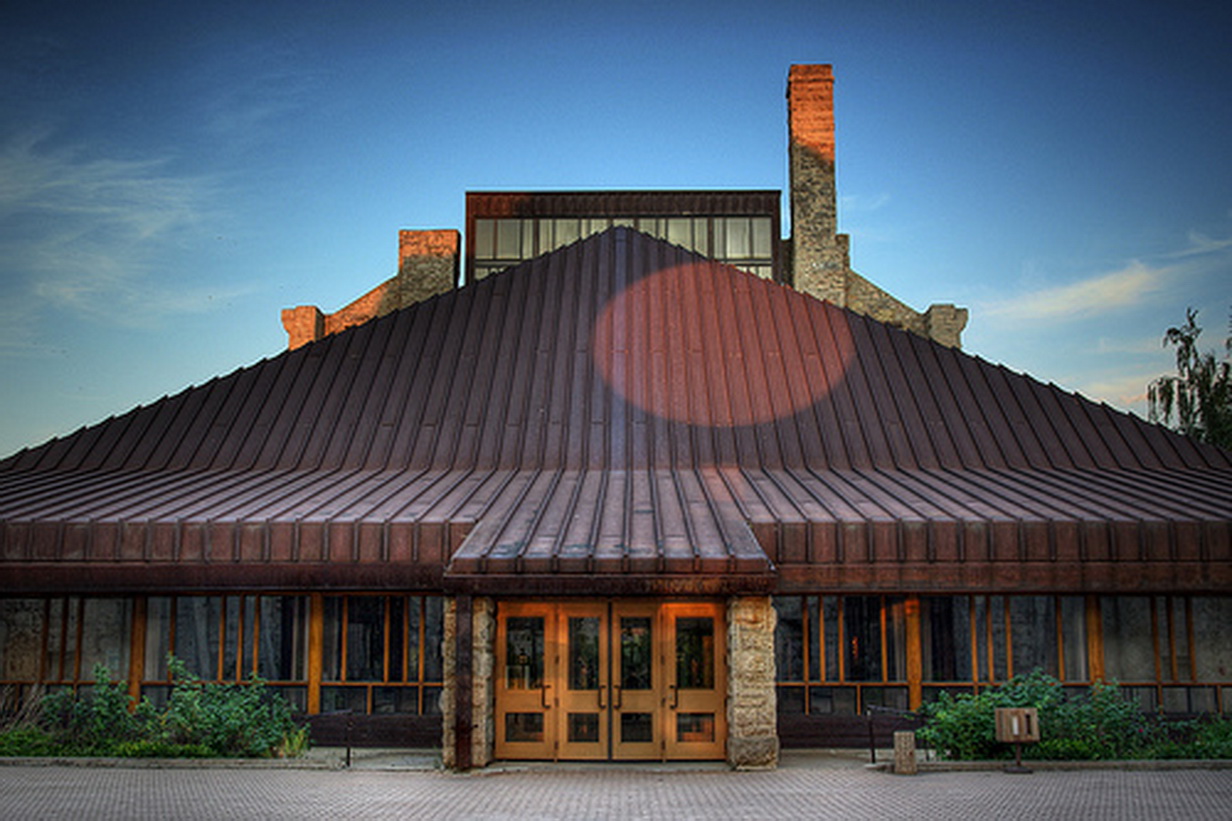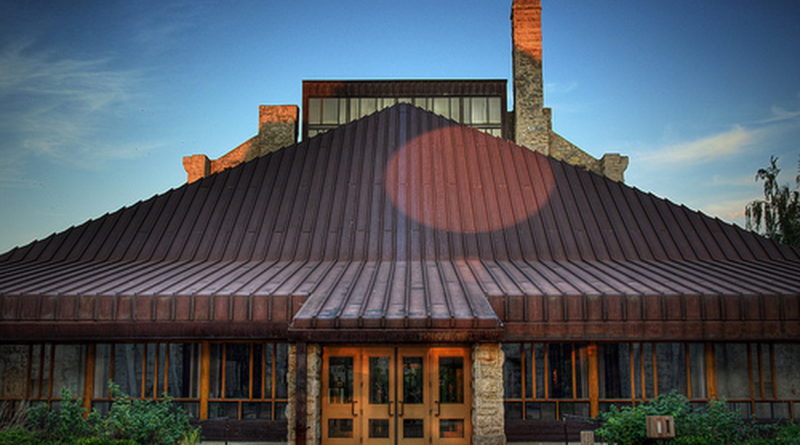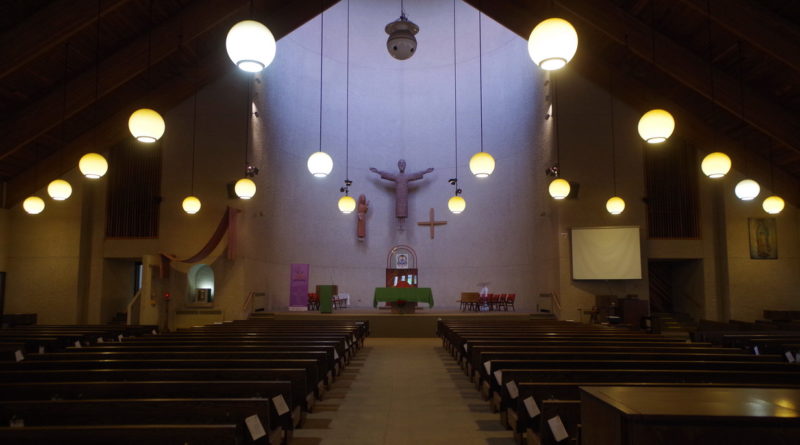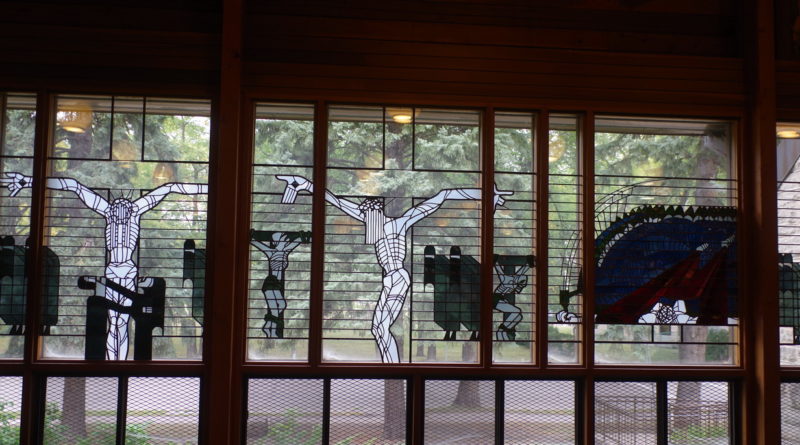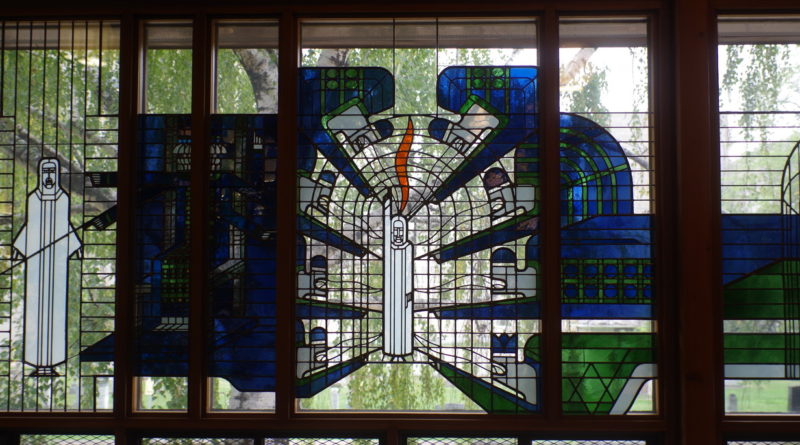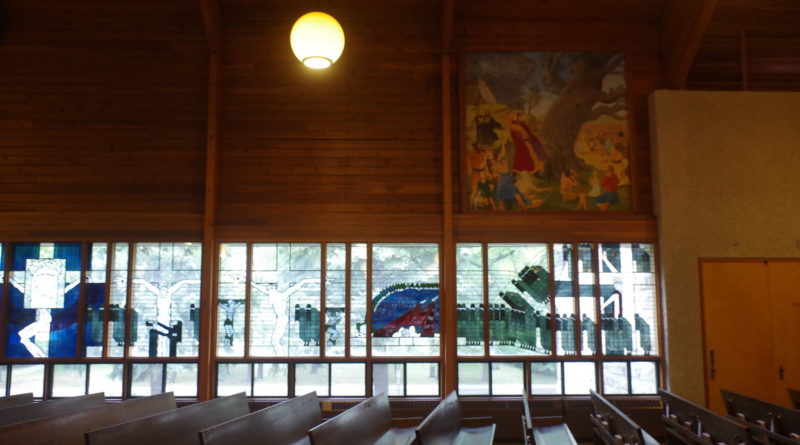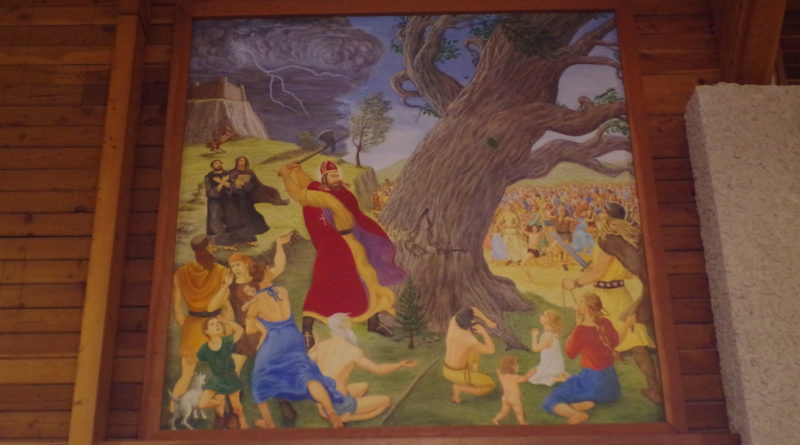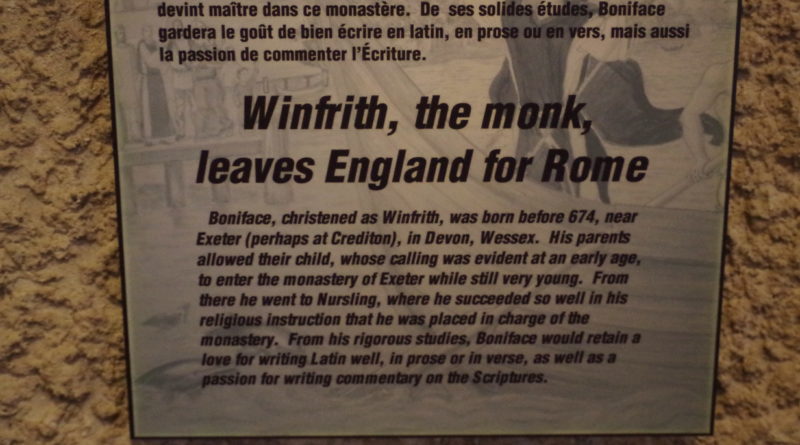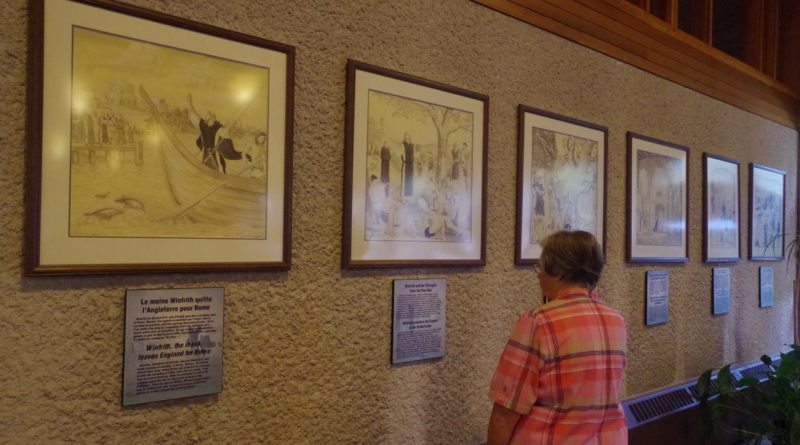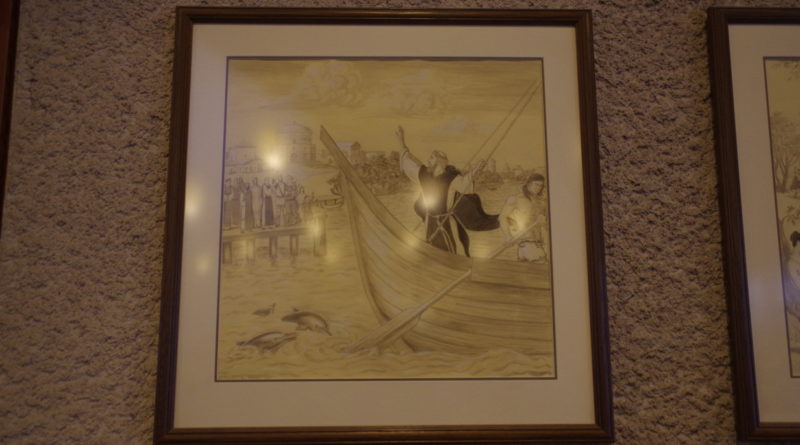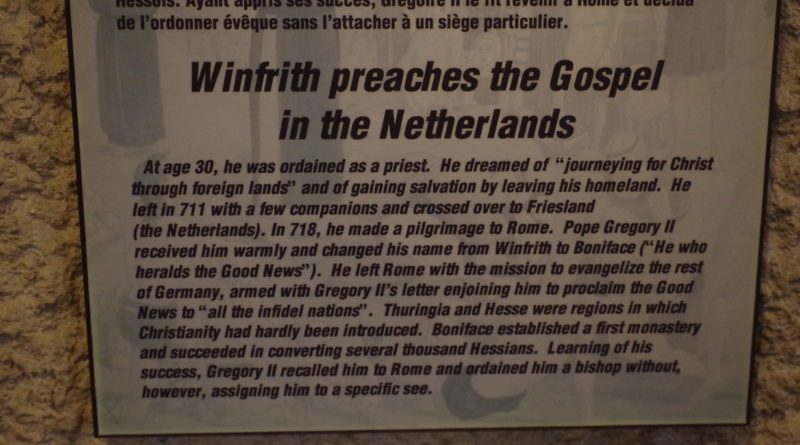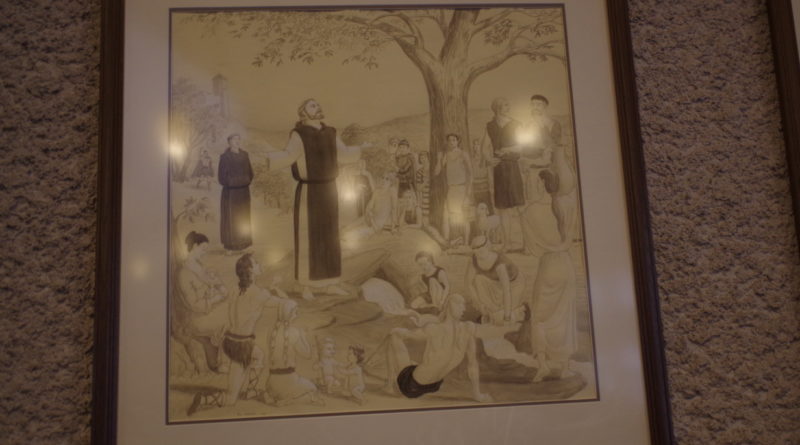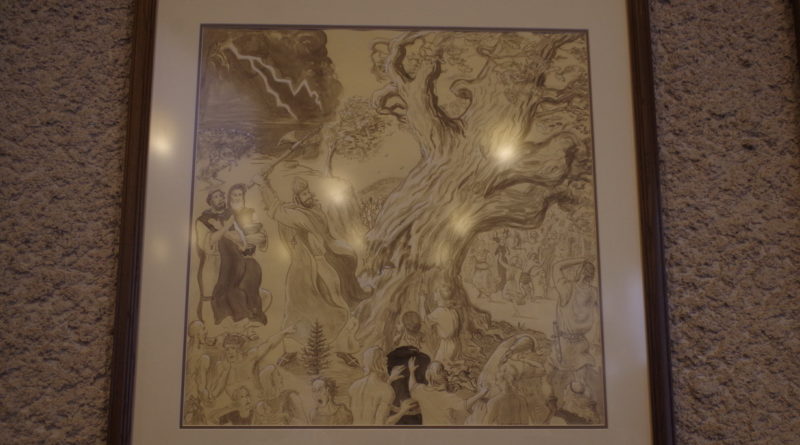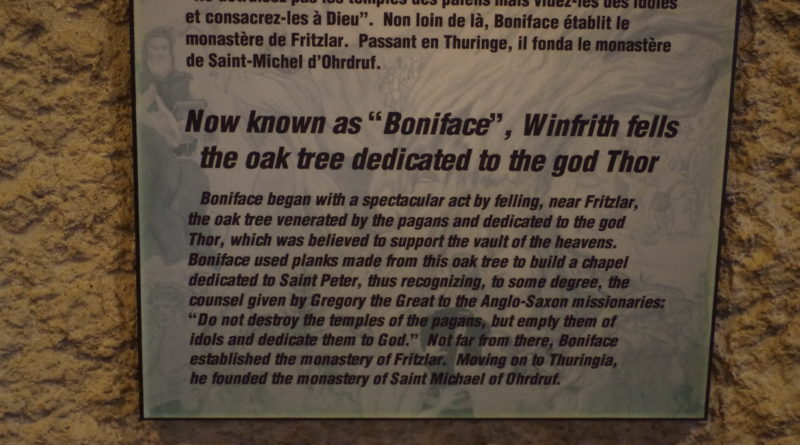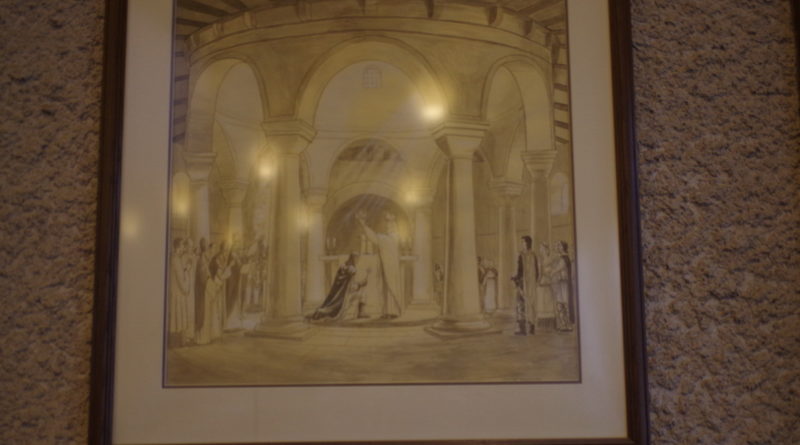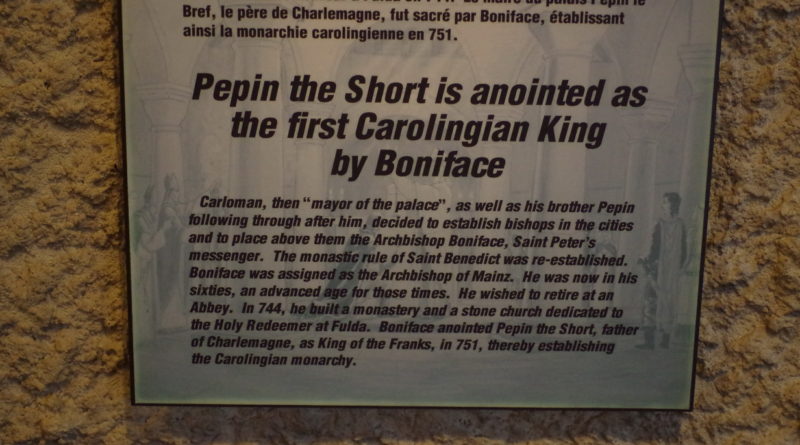Back behind the west-facing front façade of the Cathedral built in 1906 (and ruined by fire in 1968) is the new Church of Saint Boniface. In contrast to the Gothic style of the former, the new church is very modern in design and interior decoration.
Images have always been important in Catholic worship, creating visual reminders of the central events and teachings from scripture and Catholic tradition. On the front wall of any Catholic Church, one would expect to see an image of Christ hanging on the cross. This image, commonly called a crucifix, is by far the most frequently used symbol/image of the Catholic Church. However, in this case, Christ appears to be separated from the cross and appears to be lifted up, suggesting possibly both the resurrection and his ascension into heaven. It is a departure from traditional church design, but still depicting a most central event of the life of Jesus Christ.
On the right side of the church, as one enters, we find a highly stylized image of the crucified Christ, this time rendered in glass (as a variation on the traditional stained glass windows of most Catholic churches). And on the left side of the church, a similar stylized image of the Pentecost event, the promised coming of the Holy Spirit to those gathered fifty days after the Ascension.
A large painting at the rear right side of the church picks up the historic theme of Saint Boniface. It is interesting that, while this church was founded in a French community, the story of the saint it celebrates comes from the south of England. Saint Boniface became a missionary to the European continent, which in the early 700s was still very pagan. At that time, missionary work by the Irish was underway in various parts of Europe and Saint Boniface provided central leadership to the conversion of the Germanic peoples, and strong leadership to establishment of the Church under the Pope in Rome. This very much led to the founding of the the Holy Roman Empire (with the crowning of Charles the Great, or Charlemagne) in the year 800. For another 700 years, this same Holy Roman Empire provided government and Church domination to most all of Western Europe.
A variety of drawings are displayed along the back wall of the church that celebrate the life and ministry of Saint Boniface.
Click/tap images below to view in larger format.
Published: 2018/12/11
